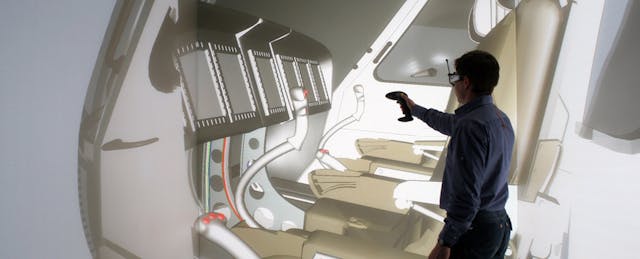Virtual Reality (VR) may be the type of educational breakthrough that comes along once in a generation, heralding a tectonic shift toward immersive content for teaching and instruction.
By presenting a complete view of the world in which it is situated, VR offers a new opportunity to close some of the pedagogical gaps that have appeared in 21st century classroom learning. These gaps stem from the fact that curriculum and content in education have not caught up with rapid technology advancements.
Below I introduce three of these gaps and how they might be addressed by virtual reality content soon to be produced and distributed commercially. Put aside, if you will, considerations of budget and adoption that accompany any new technology entering the education world. (That’s another article.)
The Attention Gap
Much has been written about social media’s impact on our diminishing attention span, which may now be even shorter than that of a goldfish.
There are exceptions; many of us are able to engage for extended periods of time when gaming or using simulations. Research has shown that we remember 20% of what we hear, 30% of what we see, and up to 90% of what we do or simulate. Virtual reality yields the latter scenario impeccably. SingularityHub's Alison Berman describes, for example, how VR might allow a student to simulate flying through the bloodstream while learning about different cells he encounters.
The Time-Effective Use Gap
While classrooms conceptually teach life skills, actual opportunities to apply them are more rare. Virtual reality can help make students’ time in the classroom more effective preparation for the job market.
Use of virtual reality is already returning positive results on the athletic field. Photorealism, the attempt to reproduce an image as realistically as possible in another medium, has had such success that the NFL and the Dallas Cowboys are beginning to use it to train football players. Wearing a VR headset, a player sees practice film as the backdrop and experiences the reality of being on the field. More significantly (to some), photorealism might someday allow students to perform surgery in science class.
The Pedagogy Gap
If you want to be fluent in German, you don’t learn Swedish. In a similar way, if you want students to learn information economy skills, you don’t teach them in text. You teach them in video and in immersive content they can “touch"—thus bridging the gap between what the world looks and acts like and what modern pedagogy actually teaches students to do.
Teachers are already striving to integrate YouTube and Netflix into curriculum to offer individualized instruction, but there are limitations on what even the best video resources can do. Says UN senior advisor and filmmaker Gabo Arora in a recent Wired article:
A YouTube video or a talk can give you information but not necessarily the ability to immerse yourself in the world of another, and also interact with people. There’s something about how VR is being made—there’s a spontaneity and naturalness that’s not necessarily coming out in other means.
Virtual Reality is anything but rote memorization. It offers a new type of discovery and organic exploration to encourage lifelong learning.
Learning the Language
I believe this is the future of virtual blended learning, a virtual environment that offers real-life application through photorealism. Premium virtual reality systems might not be ready for mass educational consumption for another couple years. But by naming this emerging discipline, I hope we can begin to create and define its applications and the creative power it has to influence and instruct.
Below are other important virtual reality terms, as well as a list of companies forging ahead with virtual blended learning applications. I have lifted a Quora post by Niranjan Sukumaran and enhanced it with info from TechRepublic’s mini-glossary of VR terms.
- Virtual Reality (VR) is everything that is not real. It allows you to experience a world that does not have a physical form.
- Head Mounted Display (HMD) is the current form of hardware delivering VR experiences to users, and one of the most common VR terms you'll hear about today. An HMD is typically a pair of goggles or a helmet of some type, with which you're viewing the VR experience. With the advent of 2016, we’ll see commercial releases of VR headsets from Oculus Rift, HTC Vive, Sony Morpheus, Microsoft Hololens, in addition to those already available from Google Cardboard and Samsung Gear VR.
- Augmented Reality (AR) is the virtual world augmented with real life notions. A simple example would be using a gyroscope to play games on your Android phone. For more sophisticated applications in the marketplace, look to Boeing's experiments or the Marines, who are using it for field training. Then there’s Microsoft Hololens, which will be one of the first commercial HMDs of its kind offering high-definition holograms seamlessly integrated into physical places. Note also that Magic Leap’s augmented reality development platform garnered $542 million in investments from Google and others last year.
Virtual Reality is arriving—but as with any new technology, it will take time to develop best practices. The rest of 2015 is a great time to dive in and ask questions, before consumer adoption takes off in 2016. You will be glad you did!


